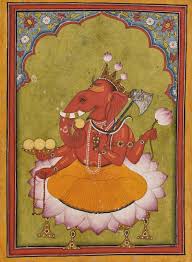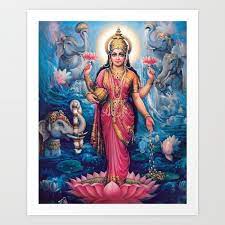
Lord Ganesha: The Remover of Obstacles
Lord Ganesha, often affectionately referred to as "Ganpati" or "Vinayaka," holds a special place in the hearts of millions of people, not only in India but around the world. He is one of the most beloved deities in Hinduism, revered as the Remover of Obstacles and the Lord of Beginnings. In this blog, we will explore the profound symbolism, stories, and cultural significance of Lord Ganesha.
The Iconography of Lord Ganesha

Lord Ganesha is instantly recognizable by his distinctive appearance, which is rich in symbolism:
-
Elephant Head: Ganesha's most defining feature is his elephant head, which represents wisdom, intelligence, and the ability to overcome obstacles with a calm and patient mind. His large ears symbolize the importance of listening and understanding.
-
Four Arms: Ganesha is often depicted with four arms, each carrying different objects. His upper right hand holds an axe to cut through obstacles, while his lower right hand offers blessings and protection. The upper left hand holds a noose to capture difficulties, and the lower left hand holds a modak (sweet dumpling), signifying the sweetness of achieving one's goals.
-
Pot Belly: Ganesha's round belly is often associated with contentment and the idea that one can digest both the sweet and sour experiences of life.
-
One Broken Tusk: Legend has it that Ganesha broke one of his tusks to use it as a pen to transcribe the epic Mahabharata when Vyasa dictated it to him. This tusk symbolizes sacrifice for the greater good and the importance of knowledge.
Stories of Lord Ganesha

There are several popular stories associated with Lord Ganesha that emphasize his role as the Remover of Obstacles:
-
The Birth of Ganesha: According to one legend, Goddess Parvati, Ganesha's mother, created him from the earth to guard her while she bathed. When Lord Shiva returned and was denied entry by Ganesha, a battle ensued, resulting in Ganesha's head being severed. Shiva later replaced it with the head of an elephant.
-
The Race around the Universe: In a famous tale, Ganesha and his brother Kartikeya were challenged to a race around the world. While Kartikeya raced on his peacock, Ganesha simply circled his parents, symbolizing his devotion to them. Ganesha's wisdom and reverence won him the race.
-
The Recovery of the Mahabharata: As mentioned earlier, Ganesha wrote down the Mahabharata as Sage Vyasa dictated it. His dedication and intelligence in this task underline his role as the patron of knowledge and learning.
Cultural Significance and Worship

Lord Ganesha is not only a deity but a cultural icon in India and beyond. His presence is invoked at the beginning of any important venture, ceremony, or festival. The annual ten-day festival, Ganesh Chaturthi, is celebrated with grand processions and the installation of elaborately crafted Ganesha idols. On the tenth day, the idols are immersed in water, symbolizing the return of Ganesha to his celestial abode.
Devotees worship Lord Ganesha to seek his blessings for success, wisdom, and the removal of obstacles, both internal and external. He is also regarded as the patron of arts and sciences, making him an inspiration for creativity and intellectual pursuits.
Conclusion
Lord Ganesha's enduring popularity transcends religious boundaries, making him a universally beloved symbol of wisdom, intellect, and the ability to overcome life's challenges. His teachings of patience, devotion, and humility resonate with people from all walks of life, reminding us that with the right mindset and a pure heart, even the most daunting obstacles can be overcome. As we invoke Lord Ganesha, we embrace the belief that he watches over us, guiding us towards success and the fulfillment of our dreams.

